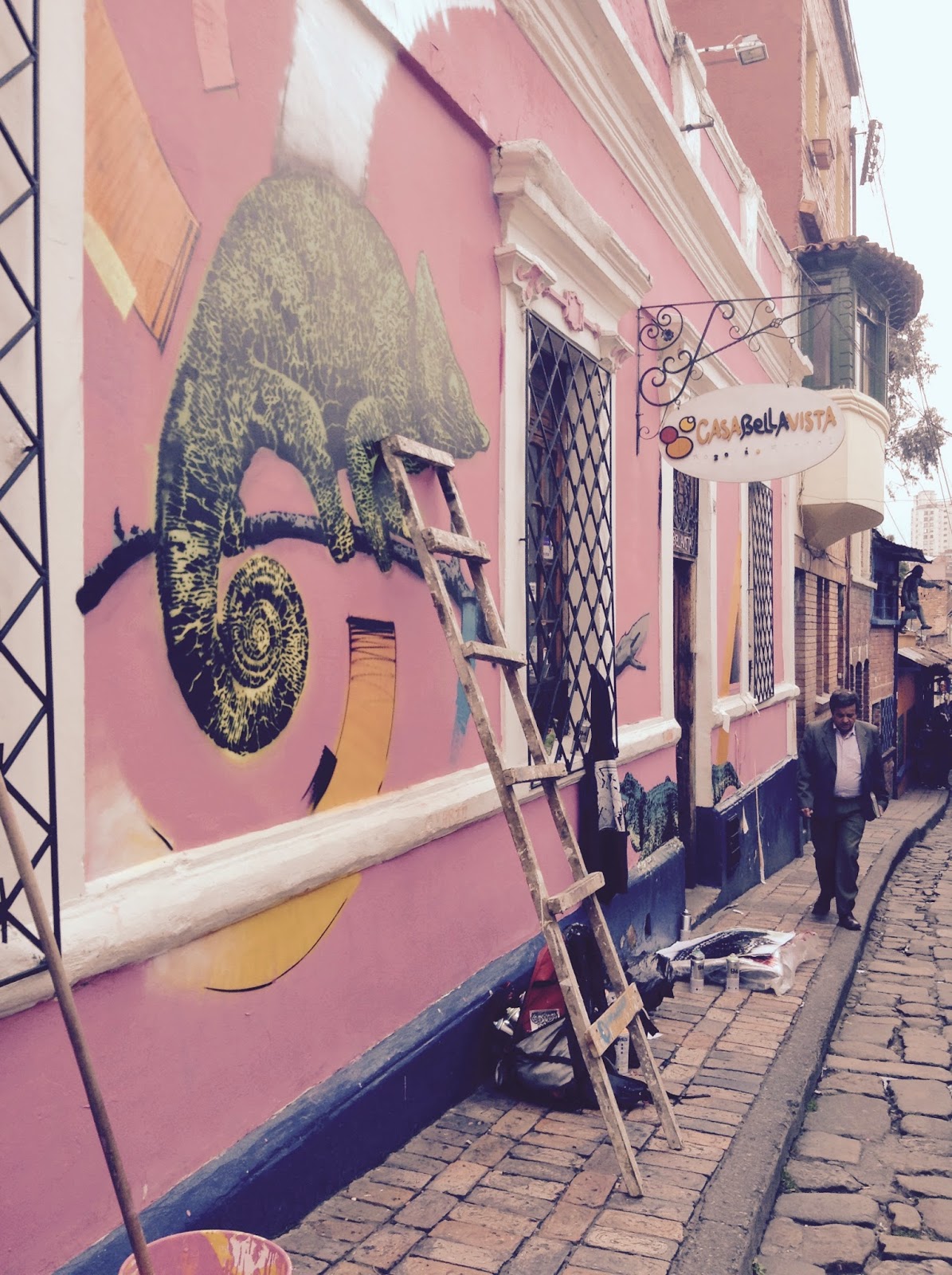Aside from the Candelaria district (the quaint post-colonial area of dangerously cobbled streets and crumbling 300 year old houses), Bogota reminds me more than anything of Terry Gilliam's set for Brazil: a post apocalyptic wasteland of fumes, seething crowds, and 80's style blockades of huge industrial towers.
The air downtown is so polluted you can taste it. Passing cars cough up huge clouds of noxious black smoke that clings to your clothing and hair. There are about three policeman on every corner, and they all look to be no more than fifteen years old. Some are accompanied by narcotics dogs, others carry AK47s. It's mandatory for Colombian males to serve two years in the police force after graduating high school, and so security is accomplished through quantity, not quality. |
| Las Policias |
A chat with some locals in Bogota revealed that Colombia's obsession with beauty originated during Escobar's prime, when wealthy drug dealers would pay for women to have plastic surgery. In some cases, surgery was a means of smuggling cocaine into the United States. Colombian beauty contestants would receive breast implants filled with cocaine, and then swap the cocaine for silicone implants upon entry to the US. Sometimes the plan went slightly awry, however, and many women were caught in the act. This began the bizarre tradition of beauty contests within Colombian prisons, as evidenced by this video: http://youtu.be/FLDWHuL_EMI
For the most part, Colombians are a jovial, easy-going lot. Everyone I asked for directions in Bogota (about 30-some people, owing to my innately terrible sense of direction), obligingly showed me the way. The Candelaria district is a Sisyphean nightmare of concentric circles that inevitably always spit me out on the wrong end. Even though I spent several days winding through the city's labyrinthine knots I still couldn't make sense of it in the end. No matter how many times I tried, I'd lose my path in the hopeless confusion of Calles and Carreras (also, there's my permanent sense of bafflement when it comes to city layouts that are anything other than grids).
 |
| Casa Bellavista |
One of my favorite items in Bogota was the Botero Museum, a delightfully weird collection of works by Fernando Botero, a figurative artist and sculptor who is self described as "the most Colombian of Colombian artists." Botero paints in an exaggerated form, and the museum is filled with his enormous renderings of reality; or, as Botero himself described, "fat figures." This included ponderous cats, a rotund Jesus Christ on the cross, a bloated Hitler, and several gargatuan still lifes.









No comments:
Post a Comment